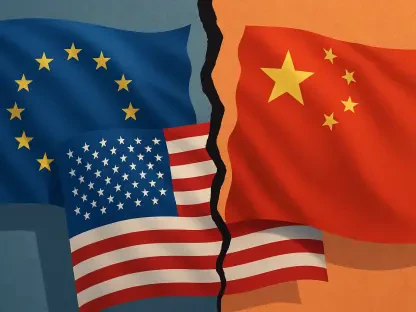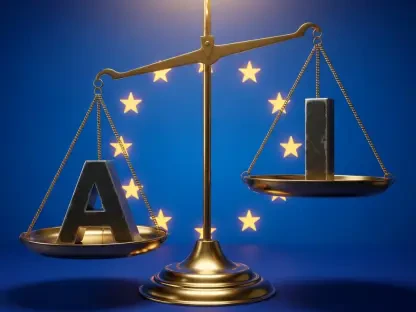Introduction to Global Compliance Landscape
In an era where multinational corporations navigate a labyrinth of regulatory frameworks, the stakes for corporate compliance have never been higher, with billions in fines and reputational damage at risk for non-compliance. Across the globe, businesses face an intricate web of laws and guidelines designed to curb corruption, ensure ethical conduct, and promote transparency, making compliance programs not just a legal necessity but a strategic asset. This complex landscape demands a deep understanding of varying expectations from key regulatory bodies such as the U.S. Department of Justice (DOJ), the UK Serious Fraud Office, France’s Anti-Corruption Agency (AFA), the OECD, and the World Bank, each playing a pivotal role in shaping global standards.
The significance of compliance in multinational environments cannot be overstated, as it serves as a shield against legal repercussions and a foundation for sustainable business practices in diverse markets. With differing enforcement mechanisms and cultural contexts, these organizations highlight the need for harmonized yet adaptable approaches to compliance. Their influence extends beyond borders, pushing companies to align with both local nuances and international benchmarks.
Understanding shared principles amidst this diversity is critical for crafting effective compliance programs that withstand scrutiny from multiple jurisdictions. The dialogue among global leaders offers invaluable insights into navigating this terrain, providing a roadmap for corporations to balance regulatory demands with operational realities. This report delves into their perspectives, uncovering the commonalities and contrasts that define the current state of global compliance.
Core Principles of Compliance Programs Worldwide
Common Threads Across Jurisdictions
At the heart of global compliance frameworks lie several universal principles that form the bedrock of effective programs, regardless of geographic boundaries. These include comprehensive risk assessment, unwavering commitment from senior management, diligent third-party oversight, regular effectiveness testing, tailored training initiatives, and secure confidential reporting mechanisms. Such elements are consistently emphasized by international regulatory bodies as essential to fostering a culture of integrity within organizations.
Global leaders stress that these principles are not mere checkboxes but critical components that ensure compliance programs are proactive and resilient. Risk assessment, for instance, is seen as the starting point for identifying vulnerabilities, while senior management’s visible support sets the tone for organizational adherence. Third-party due diligence addresses the significant risks posed by external partners, often implicated in misconduct, and effectiveness testing ensures that policies translate into real-world impact.
The consensus on these foundational aspects underscores their role in mitigating legal and ethical risks across diverse regulatory environments. Insights from various enforcers reveal a shared belief that without these core elements, compliance efforts risk becoming superficial, failing to protect companies or contribute to broader societal goals. This alignment offers a clear starting point for businesses aiming to build robust frameworks that can adapt to multiple standards.
Insights and Emphasis from Key Enforcers
Diving deeper into specific viewpoints, the DOJ places heavy emphasis on the practical application of compliance programs, urging companies to demonstrate how risk assessments directly inform their strategies. Representatives from this body often highlight the need for programs to be well-resourced and empowered, with senior leadership actively driving accountability. Their guidance frequently points to the importance of continuous monitoring to ensure policies are not just theoretical but functional under scrutiny.
France’s AFA, on the other hand, focuses intensely on anti-corruption measures, advocating for detailed risk mapping that documents both inherent and mitigated risks across operations. Their approach often includes prescriptive requirements for detection systems and corrective actions, reflecting a structured framework aimed at curbing specific misconduct. Meanwhile, the World Bank extends its perspective to supply chain integrity, insisting on accountability at every level and noting that intermediaries are involved in a staggering 80% of transnational bribery cases, a statistic that underscores the urgency of third-party oversight.
These varied emphases reveal a collective push toward customization and practicality in compliance efforts. For instance, tailored training is a recurring theme, with examples illustrating that a salesperson operating in a high-risk region requires distinct guidance compared to a domestic employee. Such role-specific approaches, combined with confidential reporting systems, are seen as vital by these enforcers to address unique challenges and foster trust within organizations.
Divergent Approaches in Global Compliance Frameworks
Navigating the global compliance arena reveals significant variations in regulatory expectations, creating a patchwork of requirements that multinational corporations must address. In France, under frameworks like Sapin II, large companies are mandated to implement anti-corruption programs, while the UK Bribery Act requires adequate procedures to prevent bribery. Conversely, the U.S. adopts a more incentivized stance, with the DOJ offering reduced penalties or declinations for companies demonstrating effective compliance, rather than imposing strict mandates.
Unique focuses further complicate this landscape, with France prioritizing anti-corruption efforts through specialized task forces, while the World Bank mandates collective action, encouraging companies to engage in industry-wide initiatives that extend compliance benefits beyond their own operations. These differences highlight distinct enforcement philosophies, where some jurisdictions opt for rigid obligations and others leverage voluntary adoption with tangible rewards, shaping how businesses allocate resources and design strategies.
Such disparities pose substantial challenges for multinational entities striving to maintain consistency across regions. Balancing mandatory requirements with flexible guidelines necessitates tailored approaches that respect local laws while adhering to broader principles. The need for strategic adaptation becomes evident as companies grapple with aligning internal policies to meet diverse expectations without compromising efficiency or ethical standards.
Regulatory Trends and Enforcement Dynamics
The regulatory landscape for compliance programs is in a state of constant evolution, driven by shifting global priorities and enforcement mechanisms. Recent changes, particularly in the U.S., have introduced a dynamic environment where businesses must stay agile to meet updated expectations, such as enhanced scrutiny on program effectiveness and resource allocation. These developments signal a broader trend toward stricter accountability, impacting how corporations structure their compliance efforts worldwide.
Beyond specific jurisdictions, there is a growing recognition of compliance as a strategic imperative rather than a mere legal obligation. International bodies and enforcers increasingly view robust programs as essential for fostering a cleaner business environment, benefiting not only individual companies but also the global market ecosystem. This perspective elevates compliance to a collective good, encouraging collaborative efforts to raise industry standards.
Enforcement dynamics further reflect this shift, with a noticeable convergence on the importance of risk-based and outcome-focused approaches. As regulators refine their methods, businesses face heightened pressure to demonstrate tangible results, pushing compliance from a reactive function to a proactive component of corporate strategy. This trend underscores the need for continuous adaptation to align with emerging regulatory priorities.
Challenges and Practical Solutions for Compliance Implementation
Designing and maintaining effective compliance programs is fraught with obstacles, particularly given resource constraints and the complexities of multiple jurisdictional requirements. Limited budgets, staffing shortages, and time pressures often hinder the ability to conduct thorough risk assessments or implement comprehensive training, leaving gaps in program robustness. These challenges are compounded by the need to reconcile differing legal expectations across regions, which can strain operational capabilities.
Global leaders offer actionable strategies to address these hurdles, advocating for a holistic design that integrates compliance into core business operations from the outset. Suggestions include fostering internal ownership of critical functions like risk management, rather than relying solely on external consultants, to ensure genuine commitment. Additionally, demonstrating practical effectiveness through regular testing and monitoring is highlighted as a way to build credibility with enforcers, even within limited means.
Adaptability and intrinsic motivation are also emphasized as key to navigating regulatory shifts. Encouraging a culture where compliance is valued for ethical and strategic reasons, beyond mere legal necessity, helps sustain efforts amid changing landscapes. By embedding these principles, companies can create flexible programs capable of evolving with both internal priorities and external demands, ensuring long-term resilience.
Future Outlook for Global Compliance Programs
Looking ahead, the compliance field faces emerging trends and potential disruptors that will shape its trajectory in the coming years. Evolving risks, such as those tied to digital transformation and geopolitical tensions, are expected to challenge existing frameworks, demanding innovative responses from corporations. Regulatory expectations are also likely to tighten, with a focus on integrating technology and data analytics to enhance monitoring and risk detection.
Innovation will play a pivotal role in addressing these developments, as companies explore new tools to streamline compliance processes and improve effectiveness. The integration of artificial intelligence for predictive risk analysis or blockchain for transparent third-party oversight represents just a glimpse of potential advancements. Staying ahead of these changes requires a forward-thinking mindset, ensuring programs remain relevant in a rapidly shifting global economy.
Multinational corporations must prepare for these challenges by building agility into their compliance strategies, anticipating regulatory shifts, and investing in scalable solutions. Collaboration with industry peers and engagement with international bodies can further equip businesses to tackle future complexities. As societal and economic landscapes transform, the ability to proactively evolve will distinguish leaders in the compliance arena.
Conclusion and Key Takeaways
Reflecting on the insights shared by global leaders, it becomes clear that while universal principles like risk assessment and leadership commitment anchor compliance efforts, divergent approaches across jurisdictions demand tailored strategies. The dialogue revealed a powerful consensus on viewing compliance as both a protective mechanism and a societal benefit, a perspective that reshaped its role in corporate strategy during discussions.
Looking back, the challenges of resource limitations and regulatory complexity stood out, yet practical solutions like holistic program design and internal ownership offered viable paths forward. As a next step, compliance professionals should prioritize building adaptable frameworks that integrate innovative tools to stay ahead of emerging risks. Engaging in industry-wide initiatives, as championed by some international bodies, also emerged as a critical consideration for amplifying impact.
Ultimately, the journey through these global perspectives highlighted the need to balance standardized practices with localized adaptations. For the future, fostering a culture of intrinsic motivation and investing in continuous improvement were identified as essential actions to ensure compliance programs not only meet current demands but also anticipate tomorrow’s challenges, safeguarding corporate integrity on a worldwide scale.









